Who should you be following?The top 100 social media influencers in orthopaedic surgery
2019-11-12NathanVaradyAkashChandawarkarWillemKernkampItaiGans
Nathan H Varady, Akash A Chandawarkar, Willem A Kernkamp, Itai Gans
Abstract
Key words: Social media; Influence; Impact; Twitter; Orthopaedics; Orthopedics
INTRODUCTION
Social media is comprised of many platforms for real time information sharing between physicians, between patients, and between physicians and patients.Consequently, the use of social media in medicine has skyrocketed with up to 90% of physicians having a social media account and up to 80% of patients turning to the Internet for medical information[1,2].Within orthopaedics, social media is a valuable tool for both the academic and private practice surgeon.Academic articles are frequently shared and discussed[3], and surgeons commonly use social media to promote their practices[4].Regardless of practice setting, social media is useful for branding, networking, mentoring, and most importantly, as a direct channel for physicians to share information with their colleagues and patients.
Previous studies have explored the correlation between social media activity and orthopaedic articles’ citation counts[3], as well as examined how patients share information about their orthopaedic injuries online[5-7].However, to date, the individuals with the largest social media influence within the orthopaedic community have not been established.A social mediainfluenceris a person who carries significant impact within a given circle or topic (e.g., orthopaedics).Social media influence is not just about having “top posts;” rather, it is a complex interplay between engagement(likes and comments), content impact, and interconnectedness with other influencers.In many ways, social media influence is akin to the academic Hirsch index (h-index),which calculates a researchers productivity and citation impact[8].Influencers are extremely important because they directly drive user behavior.Data analytics firm Annalect (New York, NY, United States) and Twitter (San Francisco, CA, United States) have shown that influencers rival friends in building trust:49% of users rely on influencers before buying a product compared to 56% relying on recommendations by friends[9].Moreover, while brand advertising exposure alone results in a user to be 2.7 times more likely to purchase a product, the combined influence of brand advertising and social media influencer endorsement nearly doubles this effect to 5.2 times as likely to make the purchase.
Which individuals have the largest social media influence in orthopaedics thus has a number of clinical implications.For example, recent work has highlighted the role of expectation-setting in delivering high-quality, value-based orthopaedic care[10-12].Given that nearly 80% of patients read medical information online[2], influencers serve in a unique position to sway patient expectations in a positive or negative manner.Similarly, in a field with many elective procedures, the propensity for users to act based on influencers highlights the need to know who is sharing and what is being shared (marketed) with patients.Additionally, orthopaedics is a highly multidisciplinary field that encompasses numerous types of providers, including:orthopaedic surgeons, primary care/family practice sports medicine physicians,physiatrists, chiropractors, physical therapist, and athletic trainers, among others.Patients may develop beliefs, questions, or concerns based on the influencers to which they are exposed.From a provider perspective, insights gleaned from characterizing the top influencers in orthopaedic surgery may help inform the average orthopaedic surgeon on how to more effectively use social media, which is particularly relevant in light of recent work by Loggheet al[13]highlighting Twitter’s potential to advance the core values of academic surgery.In response to this work, members of the orthopaedic community have even contemplated whether Twitter is now an essential tool for the orthopaedic surgeon[14].Therefore, the purpose of this study is to identify the top 100 Twitter influencers in orthopaedics and characterize them with respect to specialty, subspecialty and board certification status (if orthopaedic surgeon), practice setting, location, website use, andh-index.We hypothesized that the plurality of top influencers would be sports medicine surgeons, that social media influence would not be disconnected from academic productivity, and that some of the top social media influencers in orthopaedic surgery would not be orthopaedic surgeons.
MATERIALS AND METHODS
We chose to study social media influence on Twitter given its particular medical relevance[3,13,15-17]coupled with a recent analysis of orthopaedic social media activity demonstrating that 82% of mentions were on Twitter[3].Adapted from the methods of Chandawarkaret al[18], we queried the Right Relevance API (www.rightrelevance.com,San Francisco, CA, United States) to generate Twitter influence scores for the topic of“orthopaedics.” Right Relevance uses sophisticated partitioning techniques to calculate influence based on a variety of factors, including connections(follower/following) to other influencers and engagement (views, likes, retweets).The API was queried on July 5, 2018, and data were placed in a database (Microsoft Excel, Seattle, WA, United States).
We subsequently ranked the accounts according to influence and generated a list of the handles with the highest influence scores.We then excluded handles belonging to groups and organizations to determine the top 100 most influential individuals in orthopaedics.We further characterized these individuals with respect to specialty,subspecialty, practice setting (academic, privademic, private practice, hospital based,trainee, no longer practicing, and anonymous), use of a personal website, and location from their Twitter account biography.In cases where this information was not available on Twitter, we searched several public resources including Doximity (San Francisco, CA, United States), LinkedIn (Sunnyvale, CA, United States), ResearchGate(Berlin, Germany), and practice and institutional websites.All orthopaedic surgeons were then queried for board certification status in their respective country.Finally,hindex scores were queried from Scopus (Reed Elsevier, London, United Kingdom) on July 16, 2018 and added to the database.Statistics and graphical representation were performed in Microsoft Excel (Seattle, WA, United States).
RESULTS
The top 100 most influential individuals in orthopaedic surgery on social media are listed in Table 1.Seventy-eight percent of the top influencers were orthopaedic surgeons; 7% were physical therapists; 4% were primary care sports medicine physicians; physical medicine and rehabilitation, general surgery, and interventional cardiology physicians each composed 1%; and 8% were other non-physician individuals (Figure 1A).Eighty percent of influencers were located in the United States.The most common locations included California (13%), Florida (8%), New York(7%), United Kingdom (7%), Colorado (6%), and Minnesota (6%) (Table 2).We found a strikingly high averageh-index among the top social media influencers in orthopaedic surgery (n= 79) of 13.67 ± 4.12 (mean ± 95%CI) with a median of 7 (range 1 to 89).This can be benchmarked by the median reportedh-index for orthopaedic academic faculty which is 5 and the median h-index for orthopaedic chairpersons which is 13[19].
Of the 78 orthopaedic surgeon influencers, the ten most influential individuals were:(1) Brian Cole, MD, MBA; (2) Howard Luks, MD; (3) Steve Mora, MD; (4) David Geier, MD; (5) Robert LaPrade, MD, PhD; (6) Peter Millett, MD; (7) Katherine Burns,MD; (8) James Lubowitz, MD; (9) Sean McMillan, DO; and (10) Thomas Clanton, MD.Fifty-four percent of orthopaedic surgeon influencers primarily specialized in sports medicine, 18% in upper extremity, 8% in spine, 6% in foot and ankle, 4% in trauma,4% in hip, 3% in arthroplasty, and 4% were unlisted (Figure 1B).Approximately half of the orthopaedic influencers worked primarily in the private practice setting (53%),followed by academics (17%), privademics (14%), and hospital based (9%) (Figure 1C).Three percent of orthopaedic surgeon influencers were no longer practicing, 3%were trainees, and 1% had an anonymous account.Information on the orthopaedic surgeon influencers’ board certification is provided in Table 3.Overall, all non-trainee orthopaedic surgeons who were from countries with publicly verifiable boards were board certified (74/78).One hundred percent (n= 63) of United States-based allopathic orthopaedic surgeon influencers were board certified by the American Board of Orthopaedic Surgery; twenty-five of these individuals held subspecialty certification in sports medicine; and four held subspecialty certification in hand surgery (with one physician holding subspecialty certification in both sports medicine and hand surgery).Fifty-four percent (42/78) of the top influencers, including all of the top ten influencers, had a professional portfolio website about themselves.For 74% of such influencers (31/42), this website was an entirely separate website from their practice website.
DISCUSSION
Social media has emerged as a critical component of modern medicine[3,13,14,16,20].A large body of work has highlighted the increasing use of social media by orthopaedic patients and surgeons[4-7,21-26].At academic conferences, including the American Academy of Orthopaedic Surgeons annual meetings, Twitter has been used to increase exposure and engagement[27,28].The keynote address at the 2018 annual meeting of the American Orthopaedic Association-by internist and Twitter personality Kevin Pho (@kevinmd)-was about how to “make a difference in health care with social media.” Orthopaedic journals, hospitals, patients, and physicians are rapidly adopting Twitter[5,29].The current study highlights those individuals that have the largest impact on social media within orthopaedics.
We found that the most influential orthopaedic surgeons were predominantly board-certified, sports-medicine subspecialists working in private practice in the United States.Recent work has emphasized the under-utilization of social media by academicians[4,25,30], which may be reflected in our study.For example, Landeret al[4]found private practice pediatric orthopaedic surgeons had approximately double the social media utilization of academic physicians, consistent with our finding that the majority of top influencers worked in private practice.One may assume that these private practice users are primarily using social media to promote their practice;however, not only was this not reflected in our review of the accounts, such users would be unlikely to build high influence scores.A high influence score requires both high impact content that users engage with, as well as integration into and interaction with a larger network of experts in the particular field (e.g., orthopaedics).Thus, these surgeons are producing relevant content that is followed by and of interest to others in the field, consistent with our finding that nearly all of the top influencers were board certified and further supported by the high academich-index scores among the top influencers.
Similarly, the high number of sports medicine physicians in our study is consistent with the work of Curryet al[21]who found sports medicine patients were generally the most likely to be social media users (likely due to overlapping demographics).Surgeons tweeting about sports medicine may have the largest potential audience(younger users) fostering the growth of their influence.Prior work by Ramkumaret al[5]identified over 500 Instagram posts a month by patients on anterior cruciateligament surgery alone, highlighting the use of social media by sports medicine patients.Interestingly, National Football League team physicians were chosen as a convenience sample of potential high-influence orthopaedic surgeons in that study;however, only 16% of these individuals had Twitter accounts with an average of 94 posts.One possible explanation for this difference would be these individuals typically working at top orthopaedic hospitals (96% of which were found to have social media accounts[5]) and thus relying on hospital accounts, rather having their
own.This would be in line with the predominance of top orthopaedic surgeon influencers in this study working in private practice and prior work demonstrating lower social media utilization among academic orthopaedic surgeons[4,25,30].Given who is controlling the social media conversation on sports medicine may be unintuitive,here we identify many of the sports medicine physicians that have the highest influence in orthopaedic surgery.
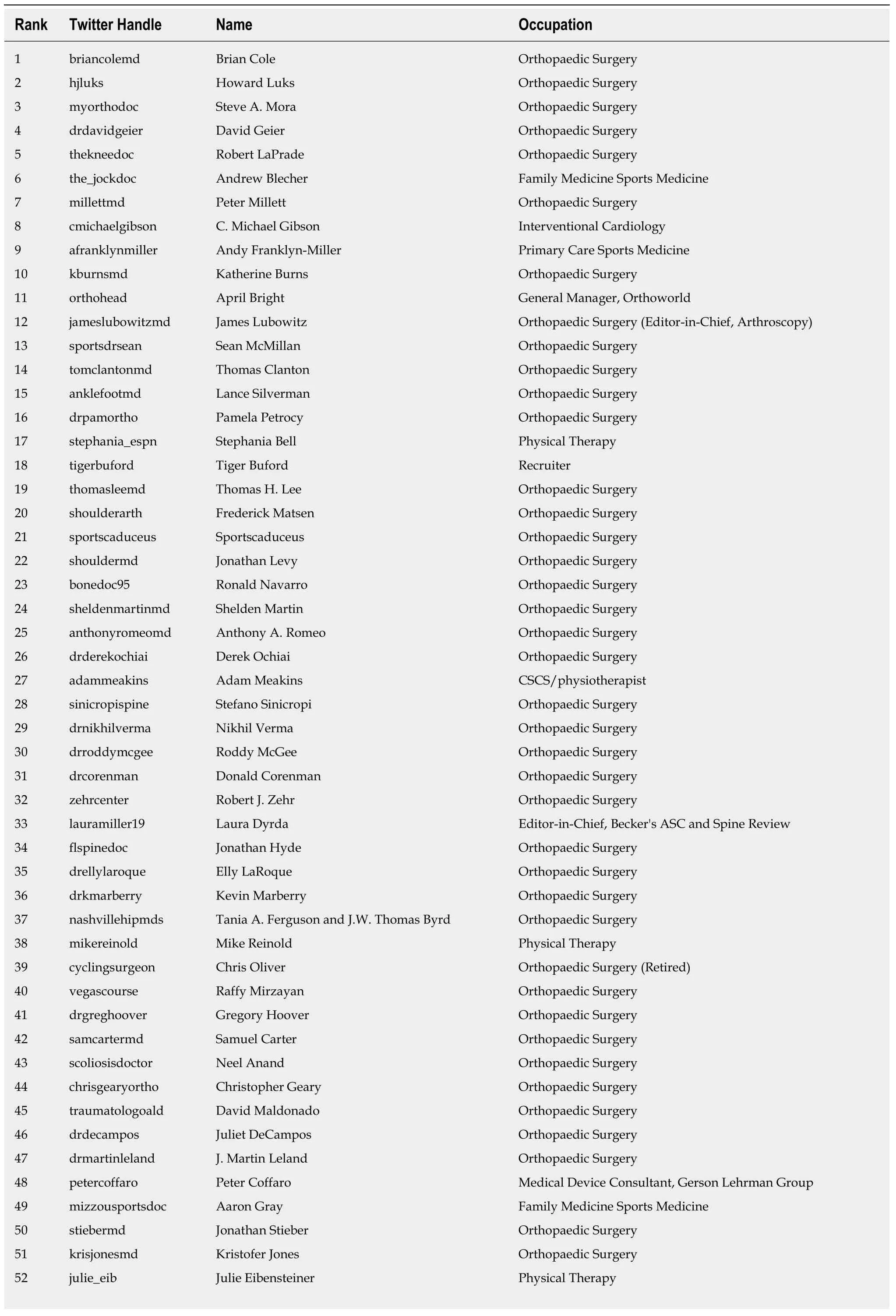
Table 1 Top 100 most influential individuals
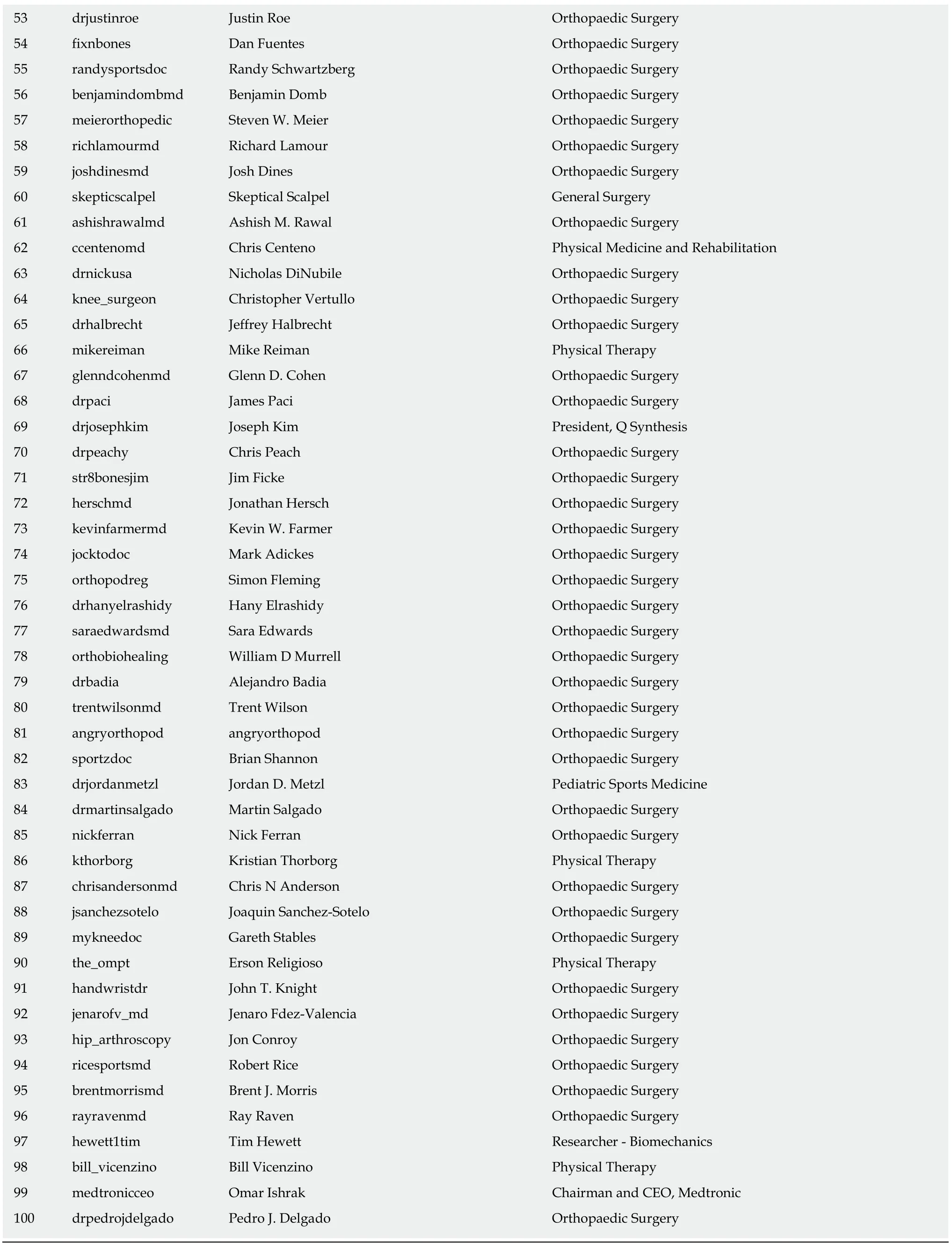
53 drjustinroe Justin Roe Orthopaedic Surgery 54 fixnbones Dan Fuentes Orthopaedic Surgery 55 randysportsdoc Randy Schwartzberg Orthopaedic Surgery 56 benjamindombmd Benjamin Domb Orthopaedic Surgery 57 meierorthopedic Steven W.Meier Orthopaedic Surgery 58 richlamourmd Richard Lamour Orthopaedic Surgery 59 joshdinesmd Josh Dines Orthopaedic Surgery 60 skepticscalpel Skeptical Scalpel General Surgery 61 ashishrawalmd Ashish M.Rawal Orthopaedic Surgery 62 ccentenomd Chris Centeno Physical Medicine and Rehabilitation 63 drnickusa Nicholas DiNubile Orthopaedic Surgery 64 knee_surgeon Christopher Vertullo Orthopaedic Surgery 65 drhalbrecht Jeffrey Halbrecht Orthopaedic Surgery 66 mikereiman Mike Reiman Physical Therapy 67 glenndcohenmd Glenn D.Cohen Orthopaedic Surgery 68 drpaci James Paci Orthopaedic Surgery 69 drjosephkim Joseph Kim President, Q Synthesis 70 drpeachy Chris Peach Orthopaedic Surgery 71 str8bonesjim Jim Ficke Orthopaedic Surgery 72 herschmd Jonathan Hersch Orthopaedic Surgery 73 kevinfarmermd Kevin W.Farmer Orthopaedic Surgery 74 jocktodoc Mark Adickes Orthopaedic Surgery 75 orthopodreg Simon Fleming Orthopaedic Surgery 76 drhanyelrashidy Hany Elrashidy Orthopaedic Surgery 77 saraedwardsmd Sara Edwards Orthopaedic Surgery 78 orthobiohealing William D Murrell Orthopaedic Surgery 79 drbadia Alejandro Badia Orthopaedic Surgery 80 trentwilsonmd Trent Wilson Orthopaedic Surgery 81 angryorthopod angryorthopod Orthopaedic Surgery 82 sportzdoc Brian Shannon Orthopaedic Surgery 83 drjordanmetzl Jordan D.Metzl Pediatric Sports Medicine 84 drmartinsalgado Martin Salgado Orthopaedic Surgery 85 nickferran Nick Ferran Orthopaedic Surgery 86 kthorborg Kristian Thorborg Physical Therapy 87 chrisandersonmd Chris N Anderson Orthopaedic Surgery 88 jsanchezsotelo Joaquin Sanchez-Sotelo Orthopaedic Surgery 89 mykneedoc Gareth Stables Orthopaedic Surgery 90 the_ompt Erson Religioso Physical Therapy 91 handwristdr John T.Knight Orthopaedic Surgery 92 jenarofv_md Jenaro Fdez-Valencia Orthopaedic Surgery 93 hip_arthroscopy Jon Conroy Orthopaedic Surgery 94 ricesportsmd Robert Rice Orthopaedic Surgery 95 brentmorrismd Brent J.Morris Orthopaedic Surgery 96 rayravenmd Ray Raven Orthopaedic Surgery 97 hewett1tim Tim Hewett Researcher - Biomechanics 98 bill_vicenzino Bill Vicenzino Physical Therapy 99 medtronicceo Omar Ishrak Chairman and CEO, Medtronic 100 drpedrojdelgado Pedro J.Delgado Orthopaedic Surgery
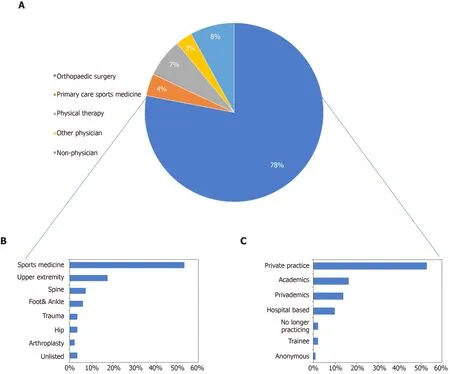
Figure 1 Occupations of the top 100 social media influencers in orthopaedic surgery.
Social media is uniquely equipped to have a positive impact for the sports medicine surgeon.First, given the overlapping demographics, skilled social media use may be used to help attract patients and grow one’s practice.Moreover, patients may expect an online presence from their sports medicine surgeon, given it is such a primary means of communication for many sports medicine patients[5].Next, it provides a platform familiar to and highly utilized by many sports medicine patients to share relevant education materials.In an anecdotal analysis of many of the top influencers accounts, there were myriad educational posts and links to blogs on topics such as rehabilitation, injury prevention, injury descriptions, sports technology, etc.In addition, Twitter provides a network for sports medicine surgeons to learn from each other.Many of the top influencers shared videos of their operative techniques and conversed with each other on topics such as management of challenging cases,interpretation of imaging, and discussing the latest orthopaedic literature.By following the top influencers in this study, sports surgeons can join this rich community and continue to grow their own influence.
Despite the applicability of social media to the practice of sports medicine and the widespread social media influence of sports medicine physicians found in this study,there still exists a limited body of scientific work related to sports medicine on social media[5].This is in contrast to fields such as hand and upper extremity, which havereceived considerable attention[7,24,25,31].While this study identifies many of the top social media influencers in sports medicine and the work of Ramkumaret al[5]examined social media use among patients and hospitals, future work examining the utilization and impact of social media on sports medicine practices may be helpful given the large social media influence sports medicine orthopaedic surgeons have on the topic of orthopaedics in general.On the other hand, our results demonstrate the paucity of top influencers from the other subspecialties within orthopaedics.Nonsports medicine physicians in the orthopaedics community should continue to work to get involved to help shape the face of orthopaedics to the public via social media and may benefit from engaging with and referencing the top influencers on this list.
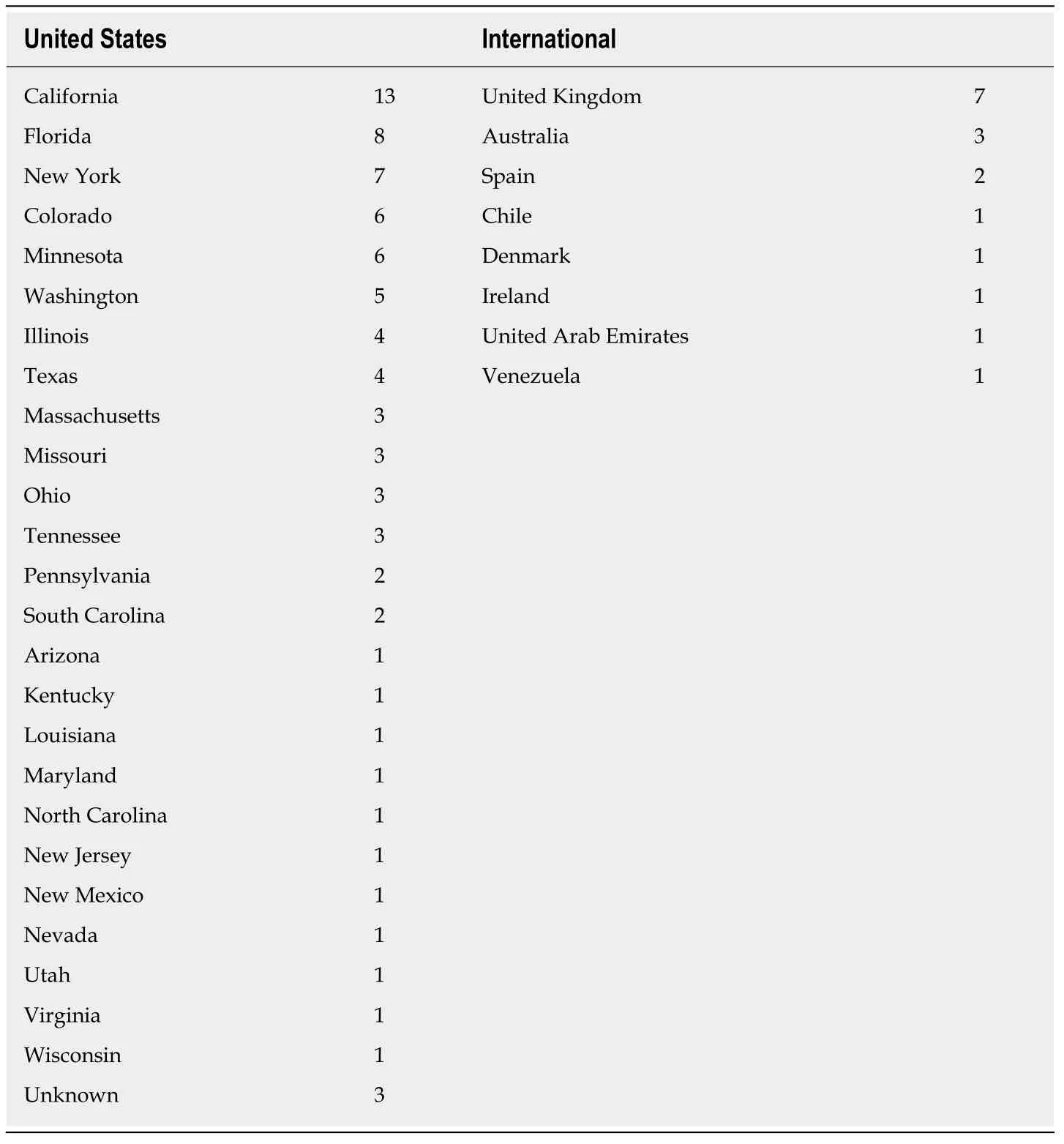
Table 2 Locations of the top 100 most influential individuals
Interestingly, over half of the top orthopaedic surgeon social media influencersincluding 100% of the top ten-had personal websites (i.e., websites about themselves that did not feature another physician).Moreover, 74% of these websites were solely portfolio/resume websites, separate from their practice website.It is unclear whether these results are due to the propensity for those with a larger online influence to have multiple online profiles, the propensity of top influencers to be sought after for employment by clinical institutions or consulting work resulting in the need for a portfolio website, or if the existence of such a website is actually useful in building influence.Notably, however, Garofoloet al[24]reported that hand surgeons with a more robust online presence observed higher patient satisfaction scores on an online rating website (Healthgrades.com), and that the use of a professional personal website was the single most important social media platform to improve scores on this platform.They found the use of a group website was associated with more reviews,but did not improve Healthgrade scores, which was also recently corroborated by Donnallyet al[30]in a review of spine surgeons.Orthopaedic surgeons hoping to build their online influence may benefit from creating a personal website, which can promote their work as well as provide a platform to host content which can be linked to from social media platforms.As this is not the main focus of this study, future studies should examine effects of personal website use for branding, online presence,and patient acquisition.
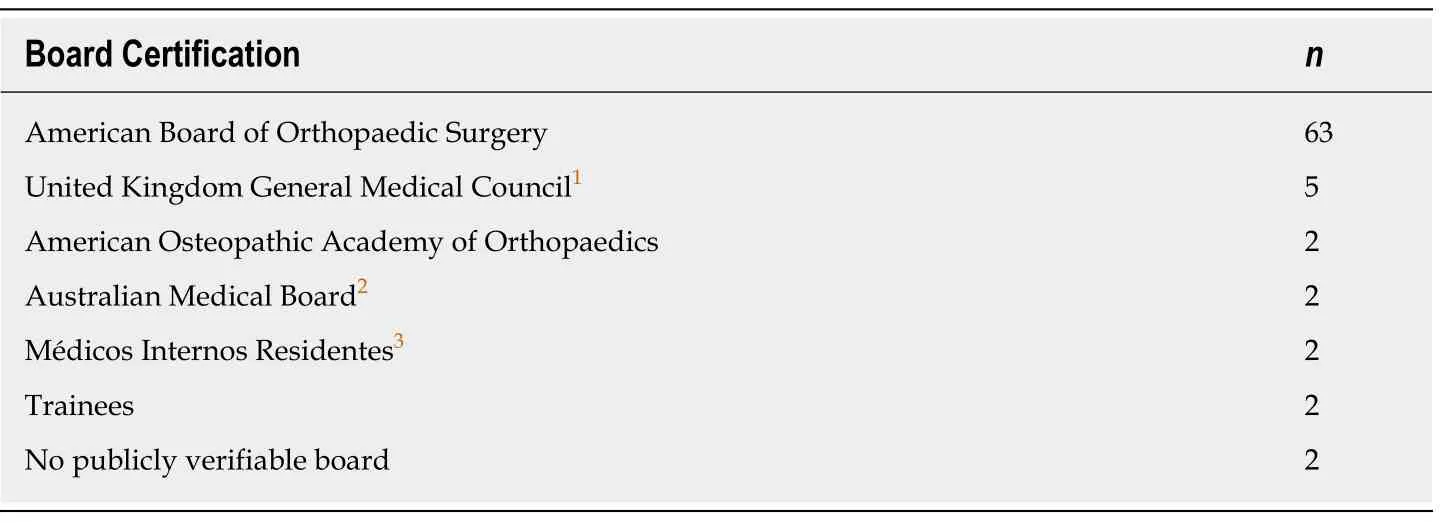
Table 3 Board certification of orthopaedic surgeon influencers
Influence, productivity, and impact within orthopaedic surgery are traditionally measured by publications, citations, and impact factors, collectively computed into an orthopaedic surgeon’sh-index.Social media influence provides a new metric by which a surgeon’s impact on the field can be measured, with some even arguing for the creation of academic tenure tracks based on social media influence[32].Our study reveals a strikingly high averageh-index among the top social media influencers in orthopaedic surgery (mean:13.67 ± 4.12, median:7), which can be compared to the median reportedh-index for orthopaedic academic faculty (5) and the medianh-index for orthopaedic chairpersons (13)[19].These findings provide further evidence legitimizing social media influencers as significant contributors to the field of orthopaedic surgery.Ultimately, social media simply provides a new way that orthopaedic surgeons can achieve the same goal of spreading new knowledge and information with both peers and the public.
While the high meanh-index observed among the top 100 social media influencers in orthopaedic surgery certainly reflects the overlap between the most influential researchers and social media users within our field, social media influencers may also benefit academically from using Twitter to support their work.For example, previous work in theJournal of Medical Internet Research[33]found highly tweeted articles (top 25%) were nearly eleven times more likely to be cited than less tweeted articles.A randomized controlled trial in psychiatry found articles promoted on Twitter received nearly three times as many page visits as controls[34].Within orthopaedics, a recent study found Twitter mentions correlated with citation counts but accumulated more rapidly with time[3].Taken together, these results underscore the role of social mediamuch like academic research-in modern orthopaedic surgery to disseminate knowledge to fellow scientists, physicians, and patients alike.In fact, many journals have been recently promoting Altmetric scores of their articles as a measure of a manuscript’s public impact, including social media and lay press.
Despite the fact the majority of top social media influencers were orthopaedic surgeons, 22% of the top influencers were not, including 3 of the top 10 influencers.Furthermore, several of these influencers were commercially-affiliated.Given the potential for these individuals to influence our patients’ perceptions and expectations,it is important to be aware of what patients may encounter online.It is also vital for us as orthopaedic surgeons to be cognizant of the impact that who, and how, we engage with others through social media-especially commercial entities-can have.To be a top influencer within orthopaedics, these non-medical accounts are almost requisitely engaged by those within our profession on a regular basis.Nonetheless, identifying the existence of these influencers is important so that orthopedic surgeons can continue to build influence and control the conversation about the specialty.
Limitations
A particular strength of this study was the examination of social media influence,rather than stand-alone metrics such as top tweets or followers.Nevertheless, an inherent weakness to any study of influence or impact (e.g.,h-index) is the use of a proprietary algorithm, in this case the Right Relevance API.It is possible other algorithms would assign different weights to certain variables of impact and thus arrive at slightly different results.However, we chose the Right Relevance API specifically because it uses sophisticated algorithms that account for engagement and connections to other influencers within the field, in addition to more simple metrics such as number of followers or retweets, helping to arrive at a truer value of influence.Given our knowledge of many of the names on the list from using social media for orthopaedics, reading the orthopaedic literature, and attending conferences,coupled with the highh-index scores of the top influencers in this study, we are confident this list does represent the majority of the top social media influencers in orthopaedic surgery.Next, these results only represent a single time point.In contrast to many online studies where results may vary on a daily basis, however, influence is an integral of social media impact over time, requiring an extended time to build, and thus is subject to significantly less variability over time.Additionally, these results are limited to a single social media platform.However, Twitter has been shown to be particularly conducive to medical discussion[3,13,15-18,35], as well as host to up to 82% of orthopaedic social media mentions[3].Moreover, given that orthopaedic surgeons frequently utilize multiple social media platforms and that many social media platforms allow for cross-platform posting, the results are likely correlated between social media platforms.As the use of social media in orthopaedics continues to grow,future work may be warranted to examine social media influence on additional platforms.Finally, we only performed one search (“orthopaedics”); however, Right Relevance includes several related topics (e.g., “orthopaedic surgery,” “orthopedics,”“orthopedic surgery,”etc.) when determining influence for a given niche.Nonetheless, it is possible a different search term may have yielded different results.
In conclusions, the top orthopaedic social media influencers on Twitter were predominantly board-certified, sports-medicine subspecialists working in private practice in the United States.Social media influence was highly concordant with academic productivity as measured by the academich-index.Though the majority of influencers are orthopaedic surgeons, 22% of top influencers on Twitter are not, which is important to identify given the potential for these individuals to influence patients’perceptions and expectations.This study also provides the top influencer network for other orthopaedic surgeons to engage with on social media to improve their own social media influence.
ARTICLE HIGHLIGHTS
Research background
Social media is playing an increasingly large role in medicine, and several studies have described how orthopaedic patients use social media.In addition to patient use, Twitter was named an“essential tool” for the academic surgeon given its ability to serve as a tool to share findings,collaborate, network, and educate.Despite the large emerging role of social media in medicine,however, no study has assessed the top social media influencers in orthopaedic surgery.
Research motivation
Given that social media is playing an increasingly large role as a face by which patients are exposed to orthopaedics, identifying who is sharing information to patients is highly important.These individuals play a critical role in setting patient expectations, encouraging appropriate utilization, and providing accurate orthopaedic education.
Research objectives
The purpose of this study was to identify the top 100 social media influencers within orthopaedics, characterize who they are, and relate their social media influence to academic influence.This analysis will allow us to identify who is controlling the conversation about orthopaedics to the public.
Research methods
In this observational study, we queried the Right Relevance API for the topic of “orthopaedics.”This API uses sophisticated partitioning techniques to calculate influence based on a variety of factors, including connections (follower/following) to other influencers and engagement (views,likes, retweets).We then used these individuals’ public Twitter bios and other public sources to characterize them with respect to specialty, subspecialty, practice setting, location, board certification, and academich-index.
Research results
We identified the 100 top influencers in orthopaedic surgery; these individuals represented 9 different countries.The mean academich-index of the top influencers (n= 79) was 13.67 ± 4.12(mean ± 95%CI) and median 7 (range 1-89), which can be references against the median reportedh-index of academic orthopaedic faculty of 5 and orthopaedic chairpersons of 13.Of the 100 top influencers, 78% were orthopaedic surgeons.Sports medicine (54%), hand and upper extremity(18%), and spine (8%) were the most common orthopaedic subspecialties.Most influencers worked in private practice (53%), followed by academics (17%), privademics (14%), and hospitalbased (9%).All board-eligible orthopaedic surgeons were board-certified.
Research conclusions
The top orthopaedic social media influencers on Twitter were predominantly board-certified,sports-medicine orthopaedic surgeons, representing countries from around the world.However,22% of top influencers were not orthopaedic surgeons, which is important to identify given the potential for these individuals to influence patients’ perceptions and expectations.Social media influence within orthopaedics was not disconnected from academic index:the medianh-index among top influencers (7) was higher than the median reportedh-index of orthopaedic academic faculty (5).Here we also provide the top influencer network for other sports surgeons to engage with on social media to improve their own social media influence.
Research perspectives
While we find that the majority of orthopaedic influencers are board-certified orthopaedic surgeons, more than 1/5 of the top influencers are not.Moving forward, orthopaedic surgeons should continue to increase their social media presence to ensure they are controlling the conversation about orthopaedics to the public.From an academic perspective, future work is indicated to identify the specific impact social media has on patient decision making and outcomes.
